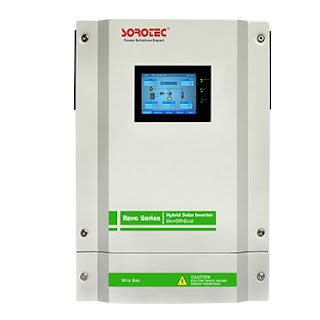Environmental adaptability of solar on grid inverter
Environmental adaptability refers to the ability of a product to achieve all its intended functions, performance and non-destructive ability under the action of various environments it may encounter in its life cycle prediction. It is an important quality characteristic. It can be seen that environmental adaptability has two elements, one is product and the other is environment. The same product has different environmental adaptability in different environments, and different products have different environmental adaptability in the same environment. Environmental adaptability is one of the quality characteristics of equipment. Once the product is finalized, the materials, components, structural composition and selected process have been solidified, and the environmental adaptability for the given environmental profile is fixed. It can be seen that environmental adaptability is the inherent quality characteristics of products, determined by design and manufacturing, and guaranteed by testing and management.
Generally speaking, the factors that affect product environmental adaptability are as follows.
1.Environmental adaptability of the selected materials and components.
2.The level of structural design includes thermal design, anti vibration, impact protection, corrosion prevention, PCB layout and other design levels.
3.The manufacturing level includes the technological level of structural parts, components, components and veneer protection.
1.Environmental adaptability of the selected materials and components.
2.The level of structural design includes thermal design, anti vibration, impact protection, corrosion prevention, PCB layout and other design levels.
3.The manufacturing level includes the technological level of structural parts, components, components and veneer protection.
Solar power generation system is usually directly exposed to the outdoor environment, often encounter high temperature, cold, humidity, wind and sand, rain, salt fog and other adverse weather conditions, solar on grid inverter as the key equipment of the whole solar power system, undertake the important role of current conversion, system communication, fault diagnosis and protection. Solar on grid inverter must be able to adapt to different operating environment, especially in harsh environment can still work stably.
Temperature challenges faced by PV grid-connected inverter mainly come from diurnal temperature difference, seasonal temperature difference, weather changes and self-heating. In many northern areas, the temperature is below – 20℃ in winter, over 40℃ in summer, big temperature difference between day and night, big seasonal temperature difference, inconsistent temperature change between the inverter shell and the internal temperature, easy to form temperature difference in the internal cavity, frequent temperature changes, product design, component selection are a serious challenge. The inverter running in wet environment such as coastal and beach will also face the risk of corrosion.
REVO-II On/Off Gird Energy Storage Hybrid Inverter with Touch Screen
1.Touch screen display
2.PV and utility power take the load at same time(can setting)
3.Output power factor PF=1.0
4.On&Off Grid with energy storage
5.Energy generated record,load record,history information and fault record
6.Language and time setting
7.Structure with dust filter
8.AC charging and AC output time setting
9.Charging voltage and charging current timing
10.External Wi-Fi device optional
11.Parallel operation with up to 6 units only available for 3kW/4kW/5kW
12.Connected with battery optional
13.Wide PV input range 120-450VDC
14.Independent CPU
15.MAX PV Array power 4500W
16.Solar and Utility supply power to the load when solar power is not sufficient to load
2.PV and utility power take the load at same time(can setting)
3.Output power factor PF=1.0
4.On&Off Grid with energy storage
5.Energy generated record,load record,history information and fault record
6.Language and time setting
7.Structure with dust filter
8.AC charging and AC output time setting
9.Charging voltage and charging current timing
10.External Wi-Fi device optional
11.Parallel operation with up to 6 units only available for 3kW/4kW/5kW
12.Connected with battery optional
13.Wide PV input range 120-450VDC
14.Independent CPU
15.MAX PV Array power 4500W
16.Solar and Utility supply power to the load when solar power is not sufficient to load




评论
发表评论